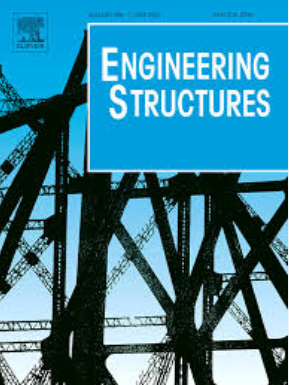A methodology for the rapid and reliable assessment of existing masonry arch bridges containing defects
IF 5.6
1区 工程技术
Q1 ENGINEERING, CIVIL
引用次数: 0
Abstract
Masonry arch bridges remain a vital part of the road and rail infrastructure. Many of those structures have already been in service for hundreds of years and are currently showing signs of defects due to material deterioration and structural damage. This paper aims to propose a methodology to evaluate the load-bearing capacity of in-service masonry arch bridges, taking into account their existing defects. According to the method, first, defects observed in masonry arch bridges during visual inspection are categorised based on their severity level in accordance with the Italian Railway Instructions. Subsequently, the defects are incorporated into an in-house two-dimensional rigid-block limit analysis code to evaluate the load-bearing capacity of single span masonry bridges with spans ranging from 6 to 20 m. The representation of defects including the loss of bricks, loss of mortar, surface spalling were taken into consideration using a probabilistic approach through the Monte Carlo method. From the results analysis, it was shown that for bridges containing same level of defect, the loss of bearing capacity (calculated as the collapse multiplier of the damaged bridge over the collapse multiplier of the undamaged bridge) is greater for bridges with shorter spans compared to those with longer spans. Also, loss of bricks from the arch ring leads to more significant reductions in the bridge’s load-bearing capacity compared to loss of mortar joint and surface spalling. Finally, the simultaneous presence of multiple defects leads to greater losses in load-bearing capacity and variations in the collapse mechanisms of the bridge. This study offers a simplified approach for quantitatively assessing the reduction in load-bearing capacity of masonry bridges containing defects, providing valuable insights for the effective management of existing masonry bridge stock.
既有砌体拱桥缺陷快速可靠评估方法研究
砌体拱桥仍然是公路和铁路基础设施的重要组成部分。其中许多建筑已经使用了数百年,目前由于材料恶化和结构损坏而出现缺陷的迹象。本文旨在提出一种考虑在役砌体拱桥存在缺陷的承载力评估方法。根据该方法,首先,根据意大利铁路指令,将目测中发现的砌体拱桥缺陷按严重程度进行分类。随后,将缺陷纳入内部二维刚块极限分析程序,对跨度为6 ~ 20 m的单跨砌体桥梁的承载能力进行评估。通过蒙特卡罗方法,采用概率方法考虑了缺陷的表示,包括砖的损失、砂浆的损失、表面剥落。结果分析表明,对于具有相同缺陷水平的桥梁,较短跨径桥梁的承载力损失(计算为受损桥梁的倒塌乘数大于未受损桥梁的倒塌乘数)大于大跨径桥梁。此外,与砂浆接缝的损失和表面剥落相比,拱环上砖块的损失会导致桥梁承载能力的更大下降。最后,多种缺陷的同时存在会导致桥梁承载能力的更大损失和倒塌机制的变化。本研究为含缺陷砌体桥梁承载能力下降的定量评估提供了一种简化的方法,为现有砌体桥梁存量的有效管理提供了有价值的见解。
本文章由计算机程序翻译,如有差异,请以英文原文为准。
求助全文
约1分钟内获得全文
求助全文
来源期刊

Engineering Structures
工程技术-工程:土木
CiteScore
10.20
自引率
14.50%
发文量
1385
审稿时长
67 days
期刊介绍:
Engineering Structures provides a forum for a broad blend of scientific and technical papers to reflect the evolving needs of the structural engineering and structural mechanics communities. Particularly welcome are contributions dealing with applications of structural engineering and mechanics principles in all areas of technology. The journal aspires to a broad and integrated coverage of the effects of dynamic loadings and of the modelling techniques whereby the structural response to these loadings may be computed.
The scope of Engineering Structures encompasses, but is not restricted to, the following areas: infrastructure engineering; earthquake engineering; structure-fluid-soil interaction; wind engineering; fire engineering; blast engineering; structural reliability/stability; life assessment/integrity; structural health monitoring; multi-hazard engineering; structural dynamics; optimization; expert systems; experimental modelling; performance-based design; multiscale analysis; value engineering.
Topics of interest include: tall buildings; innovative structures; environmentally responsive structures; bridges; stadiums; commercial and public buildings; transmission towers; television and telecommunication masts; foldable structures; cooling towers; plates and shells; suspension structures; protective structures; smart structures; nuclear reactors; dams; pressure vessels; pipelines; tunnels.
Engineering Structures also publishes review articles, short communications and discussions, book reviews, and a diary on international events related to any aspect of structural engineering.
 求助内容:
求助内容: 应助结果提醒方式:
应助结果提醒方式:


